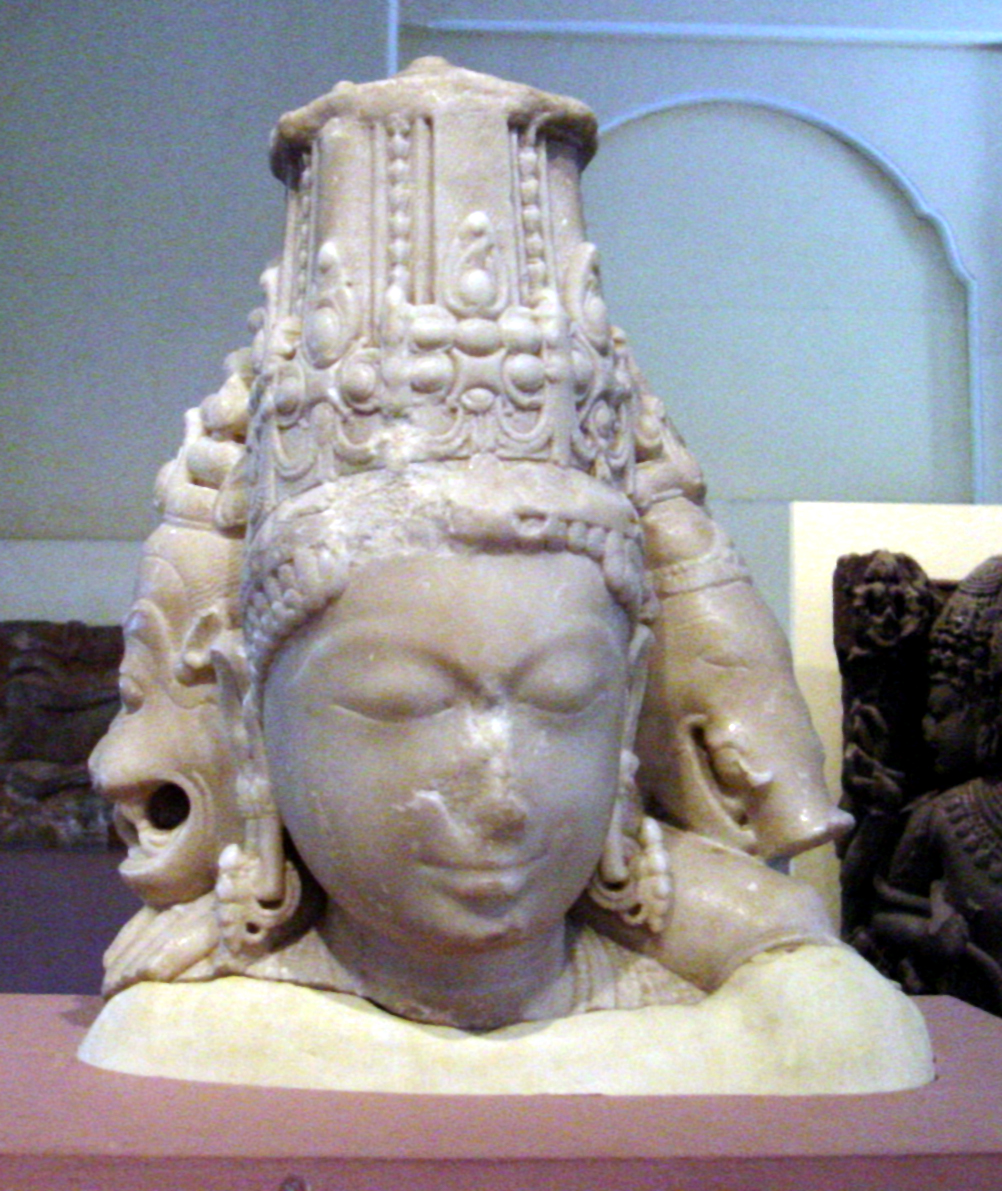|
Ahirbudhnya Samhita
The ''Ahirbudhnya Saṃhitā'' belongs to the Pancharatra religion,it is a Vaishnava tantrika composition, and was composed possibly over several centuries within the 1st millennium CE, after 300 CE. Ahirbudhnya-Saṃhitā literally means a compendium (''samhita'') of the serpent-from-the-depths (from ''ahi'' for serpent and ''budhna'' for bottom / root).Sukumari Bhattacharji, (1988). The Indian Theogony: A Comparative Study of Indian Mythology from the Vedas to the Purāṇas, p.150. CUP Archive It is now practically extinct, with a few remnants preserved in southern India, though it was once cultivated in diverse places, including Kashmir, Orissa and Mysore. Description Characteristics In the ''Ahirbudhnya Samhita'', Vishnu emanated in 39 different forms. The Samhita is characteristic for its concept of Sudarshana. It provides mantras for Shakti and Sudarshana, and details the method of worship of the multi-armed Sudarshana. Its chapters include explanations on the origin of ''ast ... [...More Info...] [...Related Items...] OR: [Wikipedia] [Google] [Baidu] |
Pancharatra
''Pancharatra'' (IAST: ''Pāñcarātra'') was a religious movement in Hinduism that originated in late 3rd-century BCE around the ideas of Narayana and the various avatars of Vishnu as their central deities.Pancharatra: religious movement Encyclopaedia Britannica The movement later merged with the ancient Bhagavata tradition and contributed to the development of Vaishnavism. The Pancharatra movement created numerous literary treatises in Sanskrit called the ''Pancharatra Samhitas'', and these have been influential Āgama (Hinduism), Agamic texts within the theistic Vaishnava movements.Oriental Institute, Maharaja Sayajirao University of Baroda (1940). Gaekwad Oriental Series, Issue 86, p.7. Literally meani ... [...More Info...] [...Related Items...] OR: [Wikipedia] [Google] [Baidu] |
Avatar
Avatar (, ; ), is a concept within Hinduism that in Sanskrit literally means "descent". It signifies the material appearance or incarnation of a powerful deity, goddess or spirit on Earth. The relative verb to "alight, to make one's appearance" is sometimes used to refer to any guru or revered human being. The word ''avatar'' does not appear in the Vedic literature; however, it appears in developed forms in post-Vedic literature, and as a noun particularly in the Puranic literature after the 6th century CE. Despite that, the concept of an avatar is compatible with the content of the Vedic literature like the Upanishads as it is symbolic imagery of the Saguna Brahman concept in the philosophy of Hinduism. The ''Rigveda'' describes Indra as endowed with a mysterious power of assuming any form at will. The ''Bhagavad Gita'' expounds the doctrine of Avatara but with terms other than ''avatar''. Theologically, the term is most often associated with the Hindu god Vishnu, though th ... [...More Info...] [...Related Items...] OR: [Wikipedia] [Google] [Baidu] |
Chakra
Chakras (, ; sa , text=चक्र , translit=cakra , translit-std=IAST , lit=wheel, circle; pi, cakka) are various focal points used in a variety of ancient meditation practices, collectively denominated as Tantra, or the esoteric or inner traditions of Hinduism.Chakra: Religion Encyclopaedia Britannica The concept of the chakra arose in the early traditions of Hinduism. Beliefs differ between the Indian religions, with many Buddhist texts consistently mentioning five chakras, while Hindu sources reference six or seven. Early Sanskrit texts speak of them both as meditative visualizations combining flowers and mantras and as physical entit ... [...More Info...] [...Related Items...] OR: [Wikipedia] [Google] [Baidu] |
Kundalini Yoga
Kundalini yoga () derives from ''kundalini'', defined in tantra as energy that lies within the body, frequently at the navel or the base of the spine. In normative tantric systems kundalini is considered to be dormant until it is activated (as by the practice of yoga) and channeled upward through the central channel in a process of spiritual perfection. Other schools, such as Kashmir Shaivism, teach that there are multiple kundalini energies in different parts of the body which are active and do not require awakening. Kundalini is believed by adherents to be power associated with the divine feminine, Shakti. Kundalini yoga as a school of yoga is influenced by Shaktism and Tantra schools of Hinduism. It derives its name through a focus on awakening kundalini energy through regular practice of mantra, tantra, yantra, yoga, laya, haṭha, meditation, or even spontaneously (sahaja).Swami Sivananda Radha, 2004, pp. 13, 15 History Name The Sanskrit adjective ' means "circular, ... [...More Info...] [...Related Items...] OR: [Wikipedia] [Google] [Baidu] |
Yoga Sutras Of Patanjali
The ''Yoga Sutras of Patañjali'' is a collection of Sanskrit sutras (aphorisms) on the theory and practice of yoga – 195 sutras (according to Vyāsa and Krishnamacharya) and 196 sutras (according to others, including BKS Iyengar). The ''Yoga Sutras'' was compiled in the early centuries CE, by the sage Patanjali in India who synthesized and organized knowledge about yoga from much older traditions. The ''Yoga Sutras'' is best known for its reference to '' ashtanga'', eight elements of practice culminating in ''samadhi''. The eight elements are ''yama'' (abstinences), ''niyama'' (observances), '' asana'' (yoga postures), ''pranayama'' (breath control), ''pratyahara'' (withdrawal of the senses), '' dharana'' (concentration of the mind), ''dhyana'' (meditation) and ''samadhi'' (absorption). The main aim of practice is ''kaivalya'', discernment of ''purusha'', the witness-consciousness, as distinct from '' prakriti'', the cognitive apparatus, and disentanglement of ''purush ... [...More Info...] [...Related Items...] OR: [Wikipedia] [Google] [Baidu] |
Kapila
Kapila ( sa, कपिल), also referred to as Cakradhanus, is a sage in Hindu tradition. According to Bhagavata Purana, he is the son of the sage Kardama and Devahuti, the daughter of the Svayambhuva Manu. Kardama had nine daughters, who were very learned and went ahead to marry Marici, as well as other great sages. When he came of age, Kapila is most well-known as the founder of the Samkhya school of Hindu philosophy., Quote:"Kapila (fl. 550 BC), Vedic sage and founder of the system of Samkhya, one of the six schools of Vedic philosophy." Kapila of Samkhya fame is considered a Vedic sage, estimated to have lived in the 6th-century BCE, or the 7th-century BCE. His home was in Mithila. His influence by Buddha and Buddhism have long been the subject of scholarly studies. According to the Brahmanda Purana, Kapila is described to be an incarnation of Vishnu: "Bhagavān Nārāyaṇa will protect us all. The Lord of the universe has now been born in the world as Kapilācārya." ... [...More Info...] [...Related Items...] OR: [Wikipedia] [Google] [Baidu] |
Shvetashvatara Upanishad
The ''Shvetashvatara Upanishad'' ( sa, श्वेताश्वतरोपनिषद् or or , IAST: ' or ') is an ancient Sanskrit text embedded in the Yajurveda. It is listed as number 14 in the Muktika canon of 108 Upanishads. The Upanishad contains 113 mantras or verses in six chapters.Robert Hume (1921)Shvetashvatara Upanishad The Thirteen Principal Upanishads, Oxford University Press, pages 394–411 with footnotes The Upanishad is one of the 33 Upanishads from Taittiriyas, and associated with the ''Shvetashvatara'' tradition within ''Karakas sakha'' of the Yajurveda. It is a part of the "black" "krishna" Yajurveda, with the term "black" implying "the un-arranged, motley collection" of content in Yajurveda, in contrast to the "white" (well arranged) Yajurveda where Brihadaranyaka Upanishad and Isha Upanishad are embedded. The chronology of Shvetashvatara Upanishad is contested, but generally accepted to be a late period Upanishadic composition.Stephen Phillips (200 ... [...More Info...] [...Related Items...] OR: [Wikipedia] [Google] [Baidu] |
Pashupata
Pashupata Shaivism (, sa, पाशुपत) is the oldest of the major Shaivite Hindu schools. The mainstream which follows Vedic Pasupata penance are 'Maha Pasupatas' and the schism of 'Lakula Pasupata' of Lakulisa. There is a debate about pioneership of this schism and the Goan school of Nakulish darshan believes that Nakulish was pioneer and Lakulish and Patanjalinath were his disciples while Gujarat school believes that Nakulish and Lakulish are one. Sarvadarśanasaṅgraha written by Vidyaranya (sometimes also known as Madhavacharya) mentions it as "Nakulish Darshan" not as "Lakulish Darshan". Both sub schools are still active in their own areas. The philosophy of the Pashupata sect was systematized by also called Nakulīśa) in the 2nd century CE. The main texts of the school are '' '' with Kauṇḍinya's ', and ' with Bhāsarvajña's '. Both texts were discovered only in the twentieth century. Prior to that, the major source of information on this sect was a chapter d ... [...More Info...] [...Related Items...] OR: [Wikipedia] [Google] [Baidu] |
Yoga
Yoga (; sa, योग, lit=yoke' or 'union ) is a group of physical, mental, and spiritual practices or disciplines which originated in ancient India and aim to control (yoke) and still the mind, recognizing a detached witness-consciousness untouched by the mind ('' Chitta'') and mundane suffering (''Duḥkha''). There is a wide variety of schools of yoga, practices, and goals in Hinduism, Buddhism, and Jainism,Stuart Ray Sarbacker, ''Samādhi: The Numinous and Cessative in Indo-Tibetan Yoga''. SUNY Press, 2005, pp. 1–2.Tattvarthasutra .1 see Manu Doshi (2007) Translation of Tattvarthasutra, Ahmedabad: Shrut Ratnakar p. 102. and traditional and modern yoga is practiced worldwide. Two general theories exist on the origins of yoga. The linear model holds that yoga originated in the Vedic period, as reflected in the Vedic textual corpus, and influenced Buddhism; according to author Edward Fitzpatrick Crangle, this model is mainly supported by Hindu scholars. According ... [...More Info...] [...Related Items...] OR: [Wikipedia] [Google] [Baidu] |
Vedas
upright=1.2, The Vedas are ancient Sanskrit texts of Hinduism. Above: A page from the '' Atharvaveda''. The Vedas (, , ) are a large body of religious texts originating in ancient India. Composed in Vedic Sanskrit, the texts constitute the oldest layer of Sanskrit literature and the oldest scriptures of Hinduism. There are four Vedas: the Rigveda, the Yajurveda, the Samaveda and the Atharvaveda. Each Veda has four subdivisions – the Samhitas (mantras and benedictions), the Aranyakas (text on rituals, ceremonies, sacrifices and symbolic-sacrifices), the Brahmanas (commentaries on rituals, ceremonies and sacrifices), and the Upanishads (texts discussing meditation, philosophy and spiritual knowledge).Gavin Flood (1996), ''An Introduction to Hinduism'', Cambridge University Press, , pp. 35–39A Bhattacharya (2006), ''Hindu Dharma: Introduction to Scriptures and Theology'', , pp. 8–14; George M. Williams (2003), Handbook of Hindu Mythology, Oxford University Press, , p ... [...More Info...] [...Related Items...] OR: [Wikipedia] [Google] [Baidu] |
Samkhya
''Samkhya'' or ''Sankya'' (; Sanskrit सांख्य), IAST: ') is a Dualism (Indian philosophy), dualistic Āstika and nāstika, school of Indian philosophy. It views reality as composed of two independent principles, ''purusha, puruṣa'' ('consciousness' or spirit); and ''prakṛti'', (nature or matter, including the human mind and emotions). ''Puruṣa'' is the witness-consciousness. It is absolute, independent, free, beyond perception, above any experience by mind or senses, and impossible to describe in words. Unmanifest ''prakriti'' is matter or nature. It is inactive, unconscious, and is a balance of the three ''guṇas'' (qualities or innate tendencies), namely ''sattva'' , ''rajas'', and ''Tamas (philosophy), tamas''. When prakṛti comes into contact with Purusha this balance is disturbed, and Prakriti becomes manifest, evolving twenty-three tattvas, namely intellect (buddhi, mahat), ego (ahamkara) mind (Manas (early Buddhism), manas); the five sensory capacitie ... [...More Info...] [...Related Items...] OR: [Wikipedia] [Google] [Baidu] |

.jpg)





